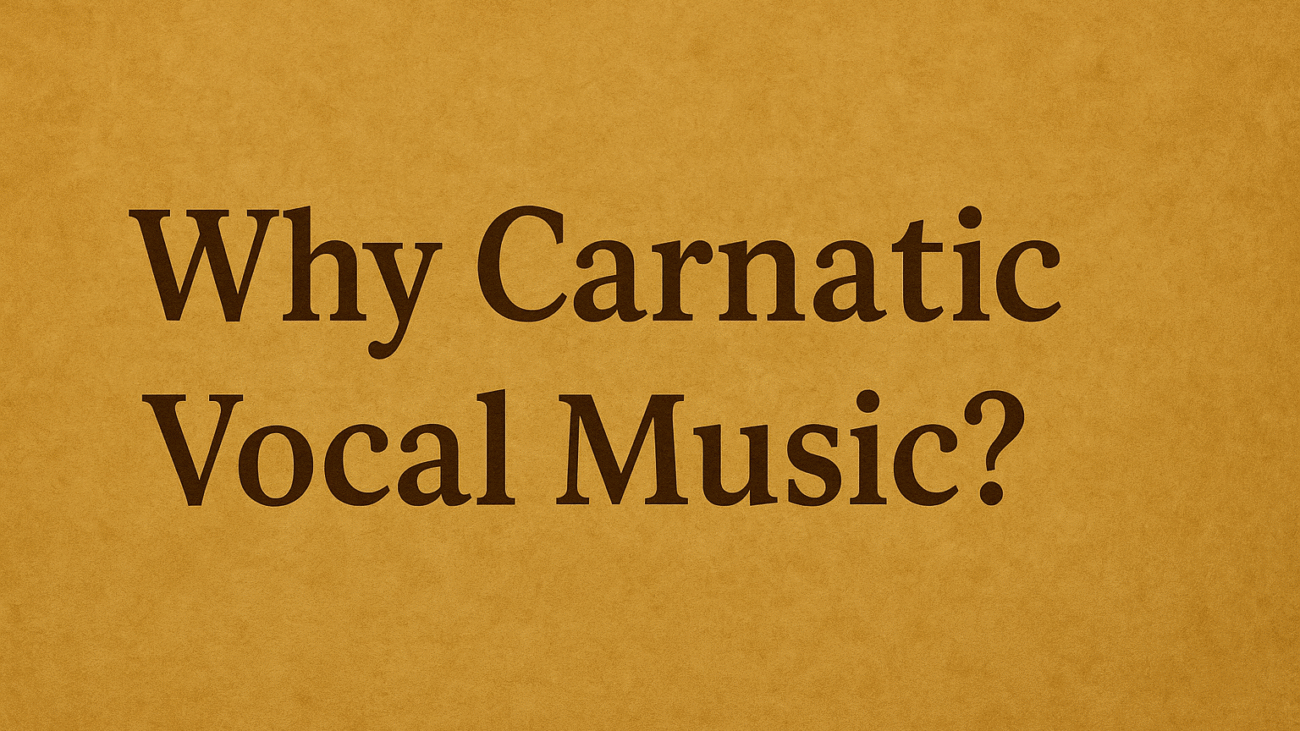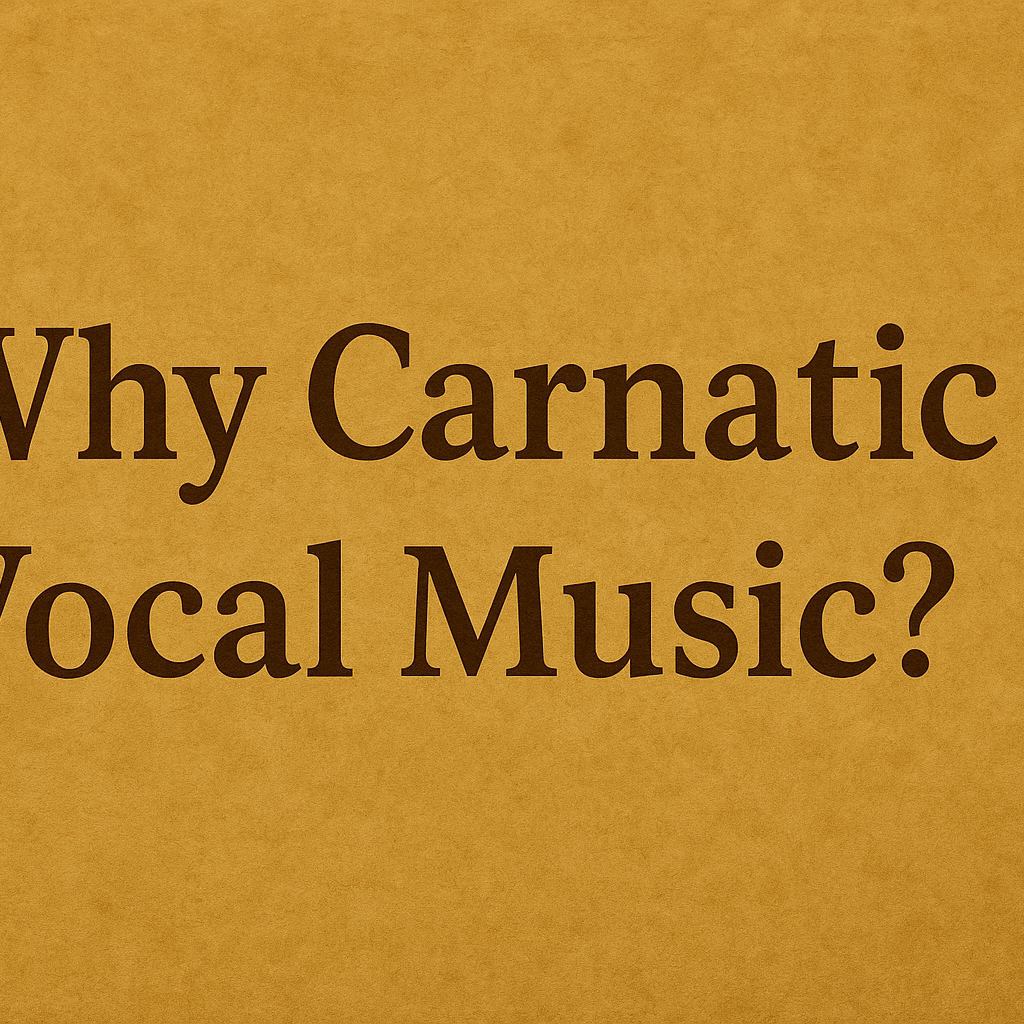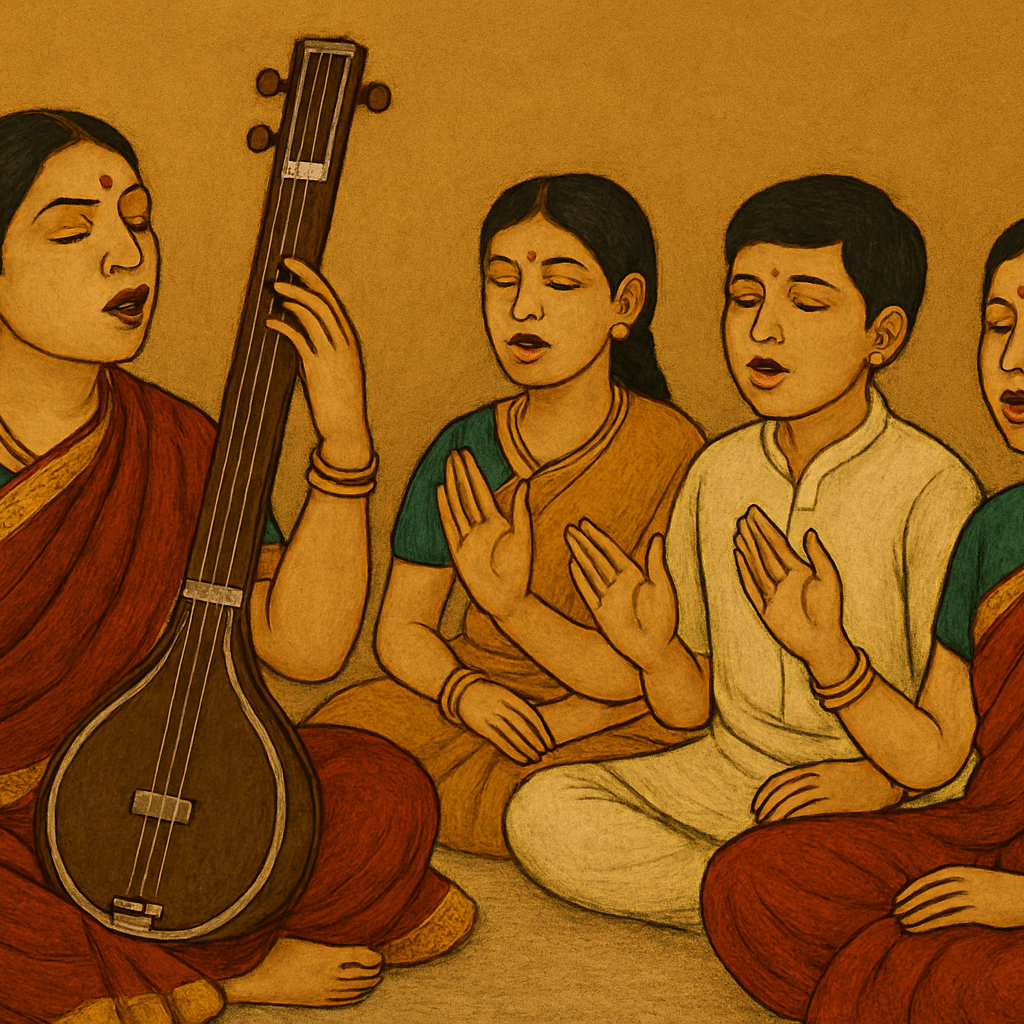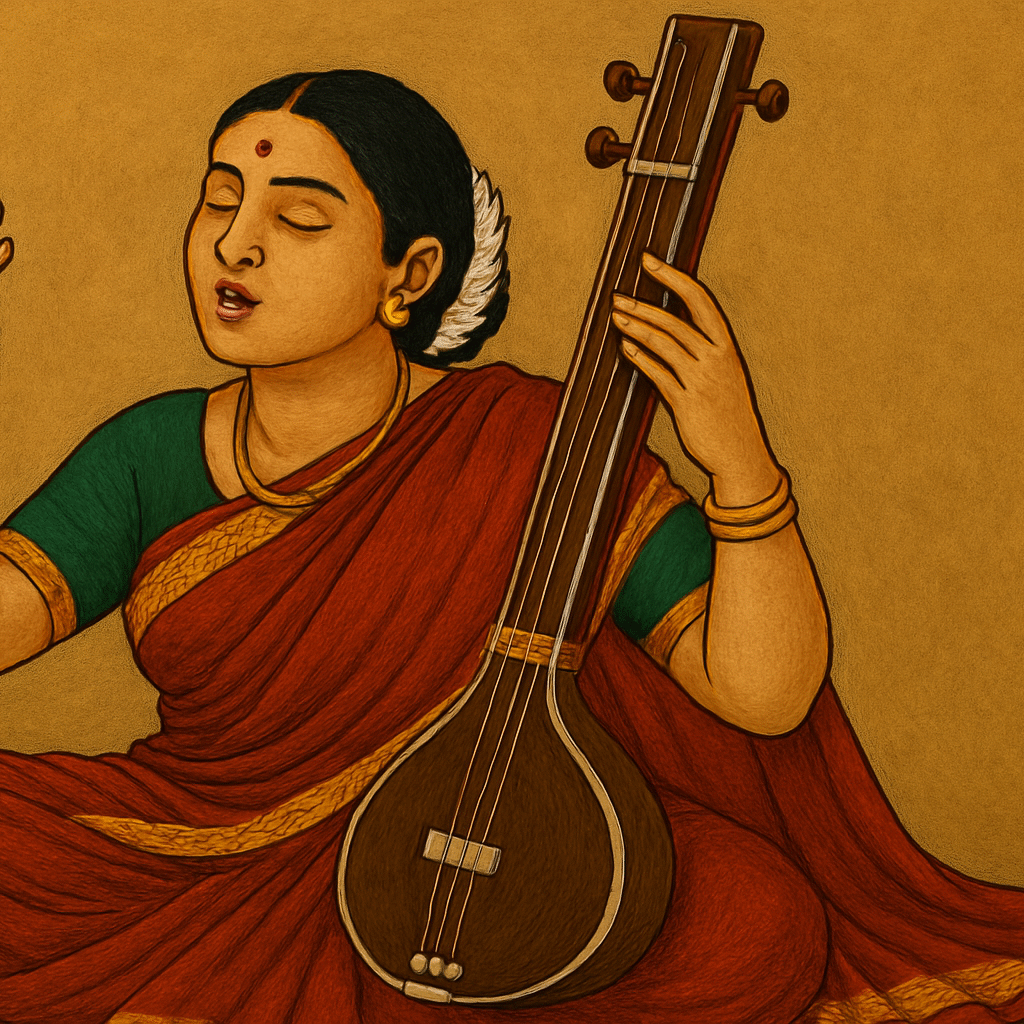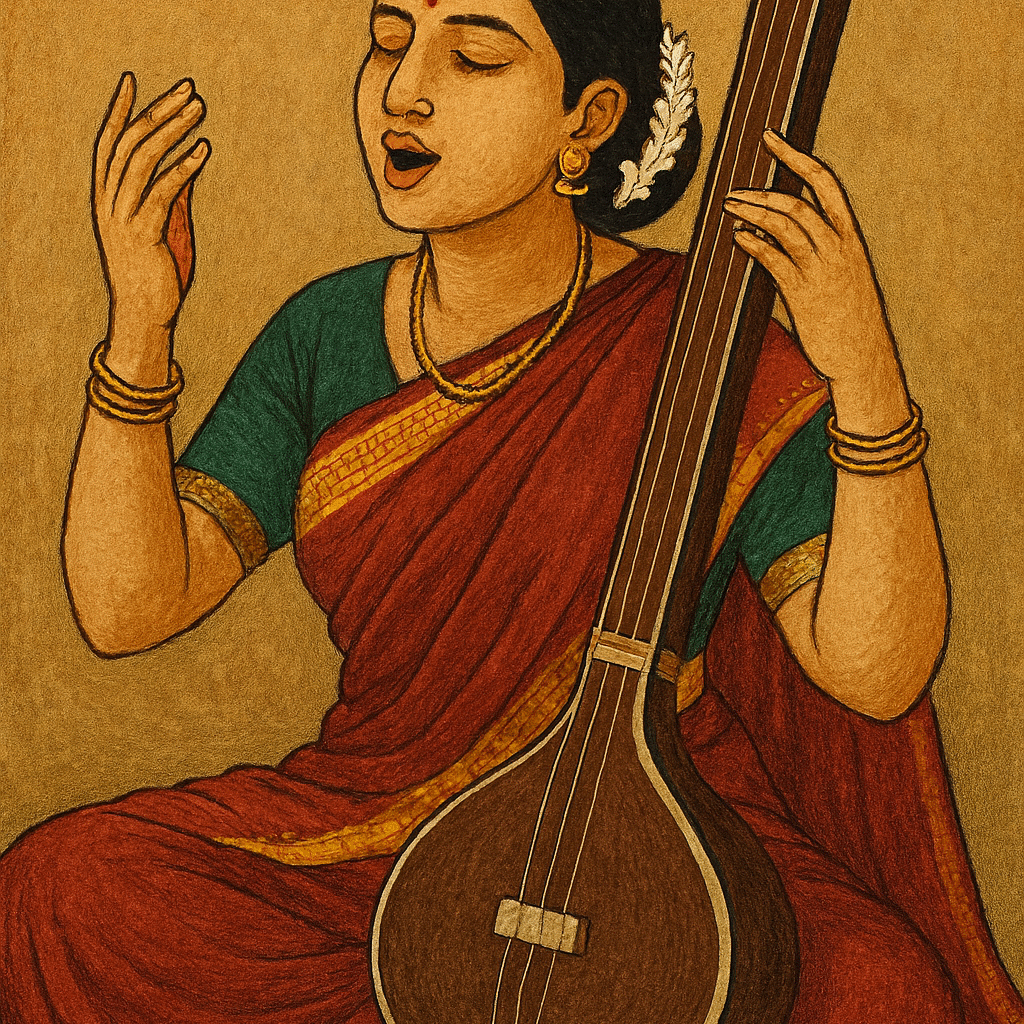The Soul of South Indian Classical Tradition
In the vast and vibrant world of Indian classical music, Carnatic vocal music holds a sacred place. It is more than just melody and rhythm—it’s a living tradition that has evolved for centuries, preserving the spiritual and cultural roots of South India. From young learners singing sarali swaras to maestros performing intricate ragas on grand stages, Carnatic music continues to enchant, educate, and elevate the soul.
In this comprehensive guide, we dive deep into the world of Carnatic vocal music, exploring its history, structure, significance, benefits, and how to begin your own journey into this timeless art form.
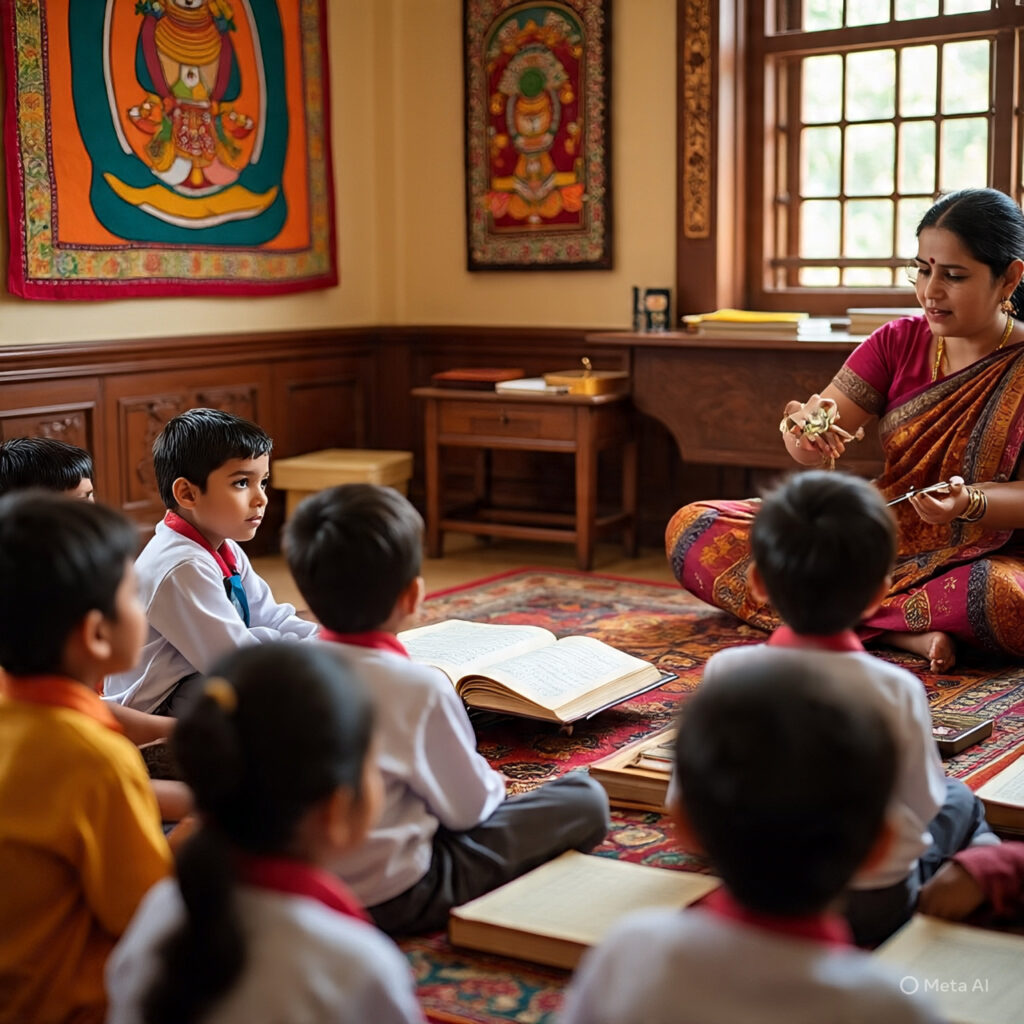
1. What is Carnatic Vocal Music?
Carnatic vocal music is the classical music of South India, primarily focused on vocal performance, although it can also be played on instruments. It is a structured, theory-rich, and devotional music system deeply rooted in Bhakti (devotion). While the music can be complex in its patterns and improvisation, it is fundamentally melodic, spiritual, and emotionally expressive.
2. History and Origin of Carnatic Music
The roots of Carnatic music trace back thousands of years to the ancient scriptures like the Sama Veda, where hymns were chanted in melodic patterns. Over time, these chants evolved into a rich musical system. Influential figures such as Purandara Dasa (often called the Father of Carnatic music), and later Saint Tyagaraja, Muthuswami Dikshitar, and Syama Sastri (the Trinity of Carnatic music), laid the foundation of the compositions and styles that are followed today.
3. Key Elements of Carnatic Vocal Music
To understand Carnatic music deeply, you need to familiarize yourself with its fundamental building blocks:
a. Raga (Melody)
A raga is a framework of musical notes used to evoke specific emotions. Each raga has a unique flavor and mood.
b. Tala (Rhythm)
Tala refers to the rhythmic cycle or beat pattern. Common talas include Adi, Rupaka, and Khanda Chapu.
c. Swaras (Notes)
The basic notes in Carnatic music are Sa, Ri, Ga, Ma, Pa, Da, Ni. These are used in different combinations to form melodies.
d. Gamaka (Ornamentation)
These are the subtle oscillations or embellishments added to swaras to enhance beauty and emotion.
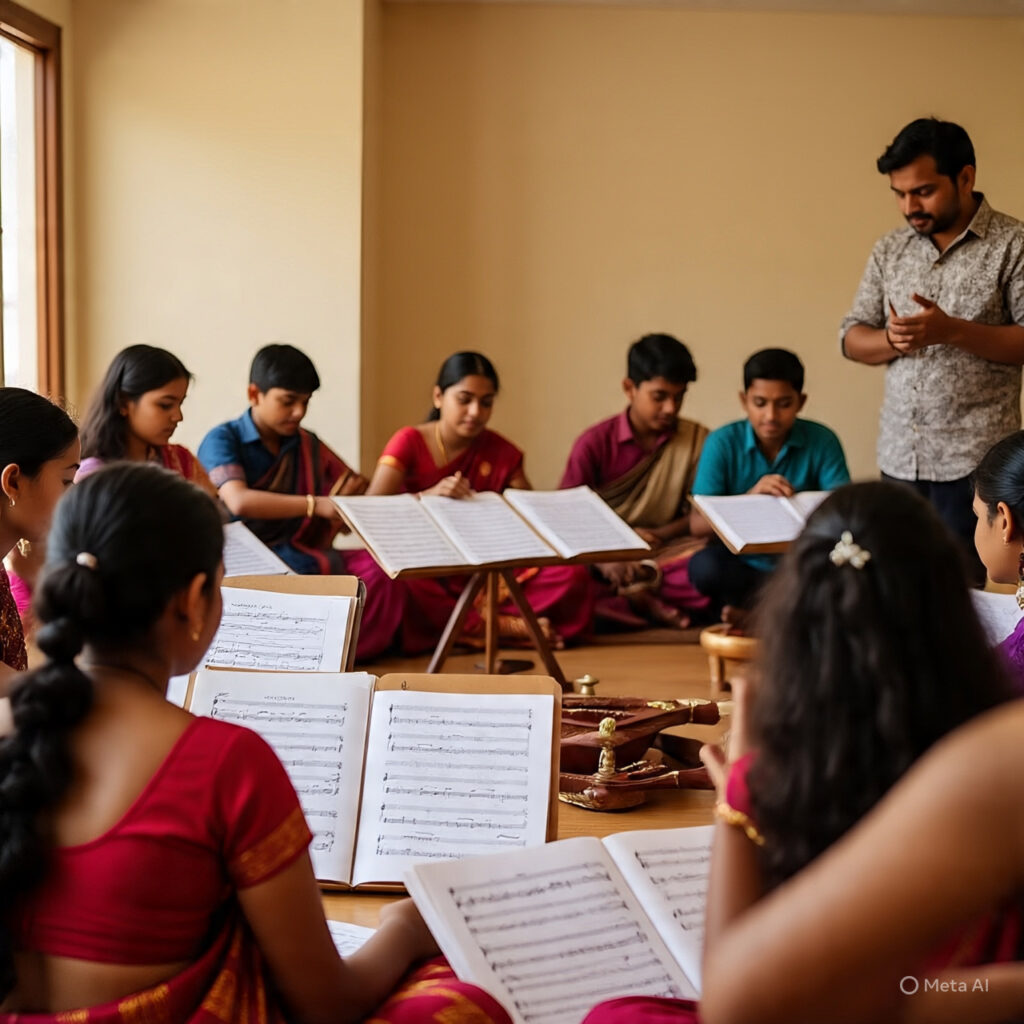
4. Structure of a Carnatic Vocal Performance
A typical Carnatic vocal concert follows a structured flow:
- Varnam: A warm-up piece introducing both melody and rhythm.
- Kriti/Keerthana: The main composition, often devotional, composed by great saints.
- Alapana: Improvised elaboration of the raga.
- Niraval and Kalpanaswaram: Creative expansions of a line in the composition.
- Ragam-Tanam-Pallavi (RTP): An advanced and elaborate presentation showcasing the artist’s mastery.
Each of these segments serves as a platform for melodic expression, rhythmic brilliance, and spiritual connection.
5. Benefits of Learning Carnatic Vocal Music
Learning Carnatic vocal music offers a wide range of benefits beyond just musical skill:
- Enhances memory and concentration
- Improves voice modulation and breath control
- Develops discipline and patience
- Connects children and adults to Indian culture and tradition
- Boosts emotional intelligence and mental well-being
- Prepares students for stage performances and competitions
- Builds confidence and communication skills
6. Carnatic Music for All Ages
Whether you’re a 3-year-old child just learning to sing or a retired adult exploring a new passion, Carnatic vocal music is for everyone. It’s a lifelong learning process, and there’s no right or wrong age to begin.
Many music academies, including RSVJ Music Academy, have trained students from toddlers to seniors, offering personalized guidance to match each individual’s pace and ability.
7. Online Carnatic Music Classes: A New Era
The digital age has transformed how people learn music. Online Carnatic vocal music classes have become a blessing for students worldwide, especially those living outside India.
Advantages of Online Learning:
- Flexible schedules
- Access to experienced teachers regardless of location
- One-on-one attention
- Recorded sessions for revision
- Parent involvement in young children’s learning
Online classes at platforms like RSVJ Music Academy have helped children as young as 2.5 years practice and perform bhajans, keerthanas, and geethams with confidence.
8. Importance of a Good Guru (Teacher)
In Carnatic music, the Guru-Shishya parampara (teacher-student tradition) plays a vital role. A skilled teacher doesn’t just teach compositions; they nurture the student’s musicality, discipline, and spiritual connection.
Choosing a certified and experienced vocal teacher—like those from reputed institutions such as Potti Sreeramulu Music College—ensures that students receive authentic and well-rounded training.
9. Devotional Core of Carnatic Music
Unlike Western music, which often explores emotions and stories, Carnatic music is deeply devotional. Most compositions are prayers or praises of Hindu gods like Lord Ganesha, Krishna, Rama, Devi, and Lord Venkateshwara.
Singing a Tyagaraja kriti or a Purandara Dasa bhajan isn’t just performance—it’s a spiritual offering.
That’s why children trained in Carnatic music develop spiritual grounding from a young age.
10. Famous Composers and Legendary Singers
Composers:
- Tyagaraja – Known for soulful kritis in praise of Lord Rama.
- Muthuswami Dikshitar – Created complex compositions rich in raga and tala structure.
- Syama Sastri – Known for his devotion to Goddess Kamakshi.
Legendary Vocalists:
- M.S. Subbulakshmi
- Dr. M. Balamuralikrishna
- Semmangudi Srinivasa Iyer
- T.M. Krishna (Modern innovator)
Their performances continue to inspire millions of learners globally.
11. Learning Path: From Basics to Mastery
Here’s how a typical Carnatic music curriculum flows:
- Sarali Swaras – Basic notes
- Janta Swaras – Paired swaras
- Alankaras – Swaras with rhythm
- Geethams and Swarajatis – Simple songs
- Varnams and Kritis – Complex compositions
- Raga Alapana, Niraval, Kalpanaswaram, RTP – Advanced creativity and improvisation
Each stage helps in building voice strength, tala control, and raga knowledge.
12. Performance Opportunities and Competitions
With proper training, students can participate in:
- School annual functions
- Music competitions
- Devotional programs at temples
- YouTube or social media platforms
- Stage concerts and cultural events
Platforms like RSVJ Music Academy also conduct internal evaluations and showcases, giving students a chance to overcome stage fear and gain confidence.
13. Integrating Carnatic Music with Modern Life
Many parents wonder: “Will learning Carnatic music help my child in today’s world?”
The answer is: Absolutely. Beyond tradition, Carnatic music builds focus, emotional maturity, voice clarity, and even improves language skills in Telugu, Sanskrit, and Tamil.
In an era full of distractions, Carnatic music teaches mindfulness and inner peace.
14. Why Choose RSVJ Music Academy?
At RSVJ Music Academy, founded by Shri Bole Jhansi, a certified vocal teacher from Potti Sreeramulu Music College, the mission is simple:
“To make Carnatic music learning joyful, accessible, and spiritually enriching for all age groups.”
With international students from the US, Canada, and across India, the academy is known for:
- Flexible online class timings (day and night)
- Focus on devotional songs for festivals like Ganesh Chaturthi
- Friendly environment for children
- Regular stage and video performance opportunities
- Customized syllabus for kids, adults, and beginners
Parents of students as young as 2.5 years share glowing testimonials:
“We’re amazed how our child sings bhajans so beautifully at such a young age. Thanks to RSVJ Music Academy!” – Atchuta Shiva & Sucharitha
Conclusion: A Journey Worth Taking
Carnatic vocal music is more than just an art—it’s a journey of self-expression, discipline, and devotion. Whether you’re a parent seeking meaningful learning for your child, a student looking to explore tradition, or an adult reviving a childhood dream, Carnatic music welcomes you with open arms.
Start your journey today. Let your voice be the bridge between culture, spirit, and melody.
🎶 Enroll now at RSVJ Music Academy and discover the joy of singing from your soul.
📞 Flexible timings | Online classes available worldwide

